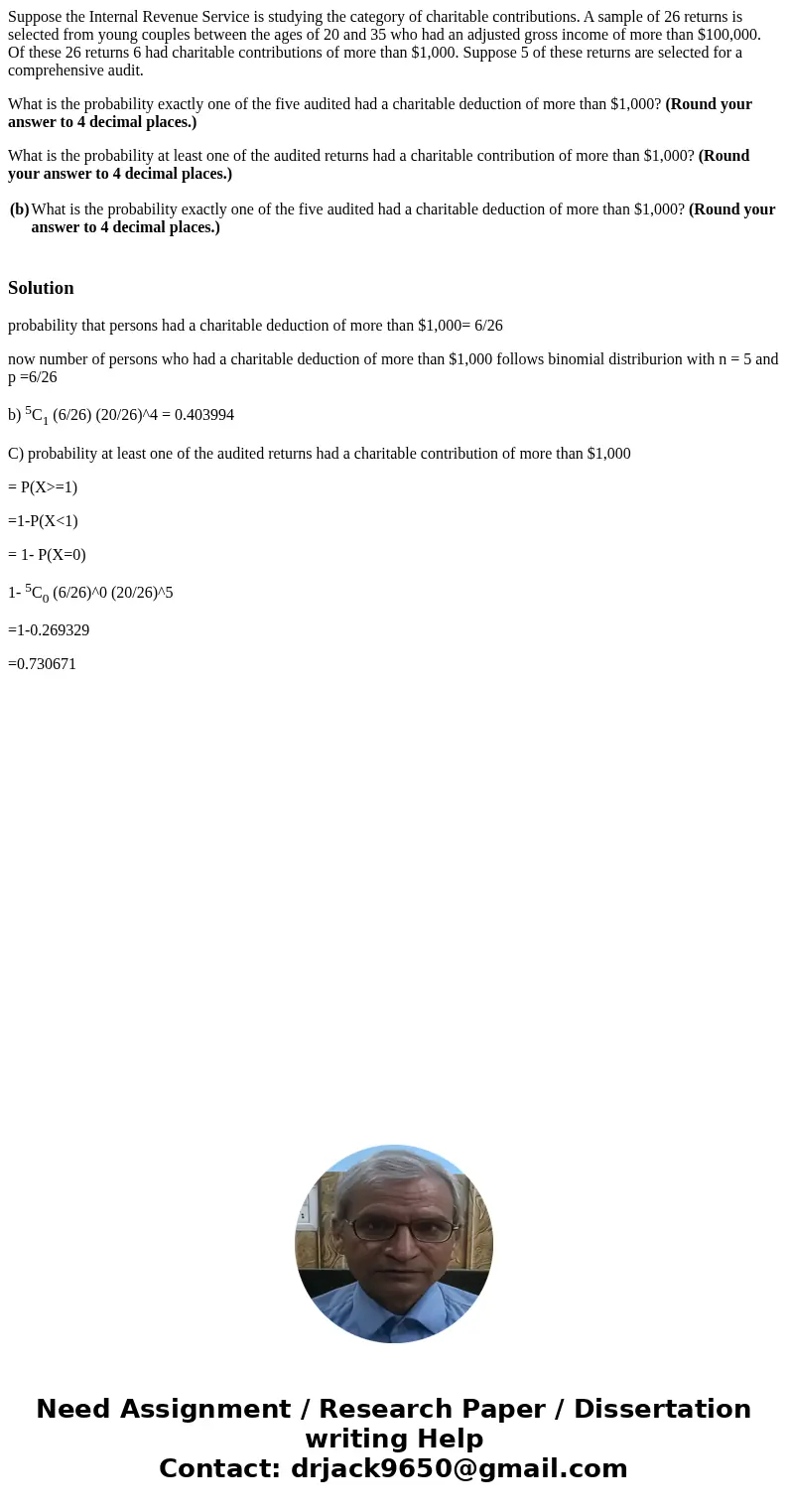Suppose the Internal Revenue Service is studying the categor
Suppose the Internal Revenue Service is studying the category of charitable contributions. A sample of 26 returns is selected from young couples between the ages of 20 and 35 who had an adjusted gross income of more than $100,000. Of these 26 returns 6 had charitable contributions of more than $1,000. Suppose 5 of these returns are selected for a comprehensive audit.
What is the probability exactly one of the five audited had a charitable deduction of more than $1,000? (Round your answer to 4 decimal places.)
What is the probability at least one of the audited returns had a charitable contribution of more than $1,000? (Round your answer to 4 decimal places.)
| (b) | What is the probability exactly one of the five audited had a charitable deduction of more than $1,000? (Round your answer to 4 decimal places.) |
Solution
probability that persons had a charitable deduction of more than $1,000= 6/26
now number of persons who had a charitable deduction of more than $1,000 follows binomial distriburion with n = 5 and p =6/26
b) 5C1 (6/26) (20/26)^4 = 0.403994
C) probability at least one of the audited returns had a charitable contribution of more than $1,000
= P(X>=1)
=1-P(X<1)
= 1- P(X=0)
1- 5C0 (6/26)^0 (20/26)^5
=1-0.269329
=0.730671

 Homework Sourse
Homework Sourse